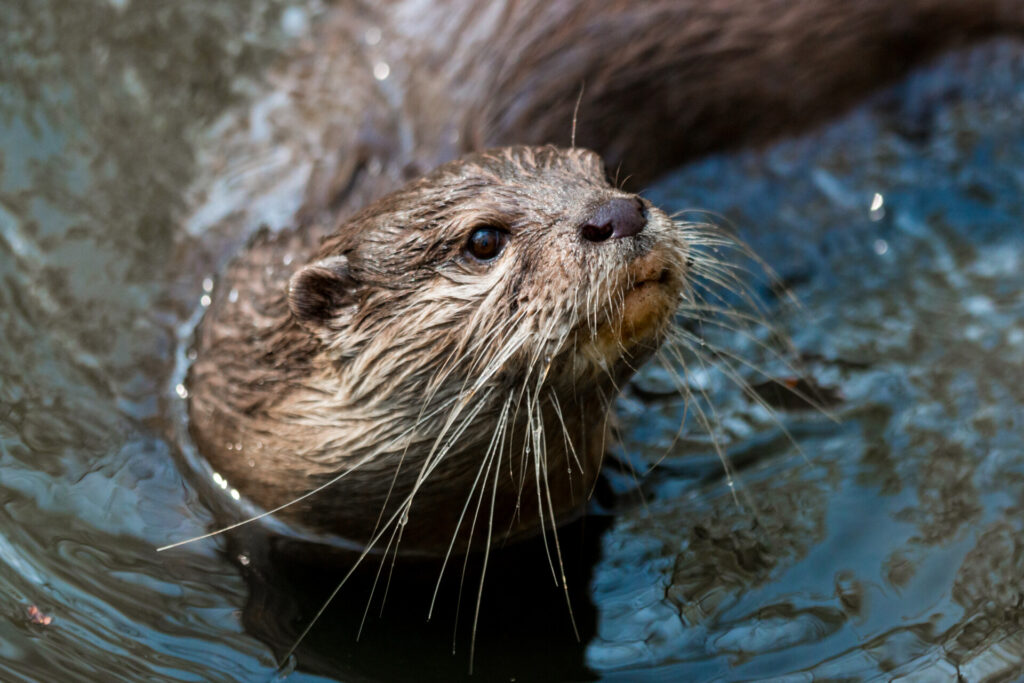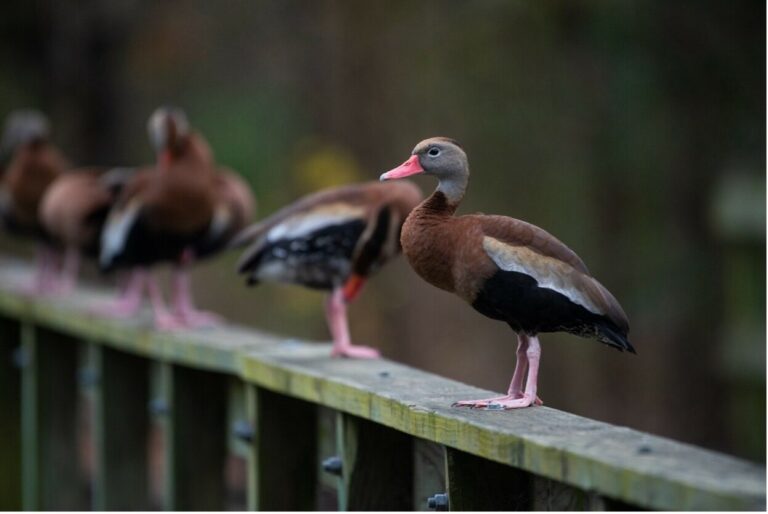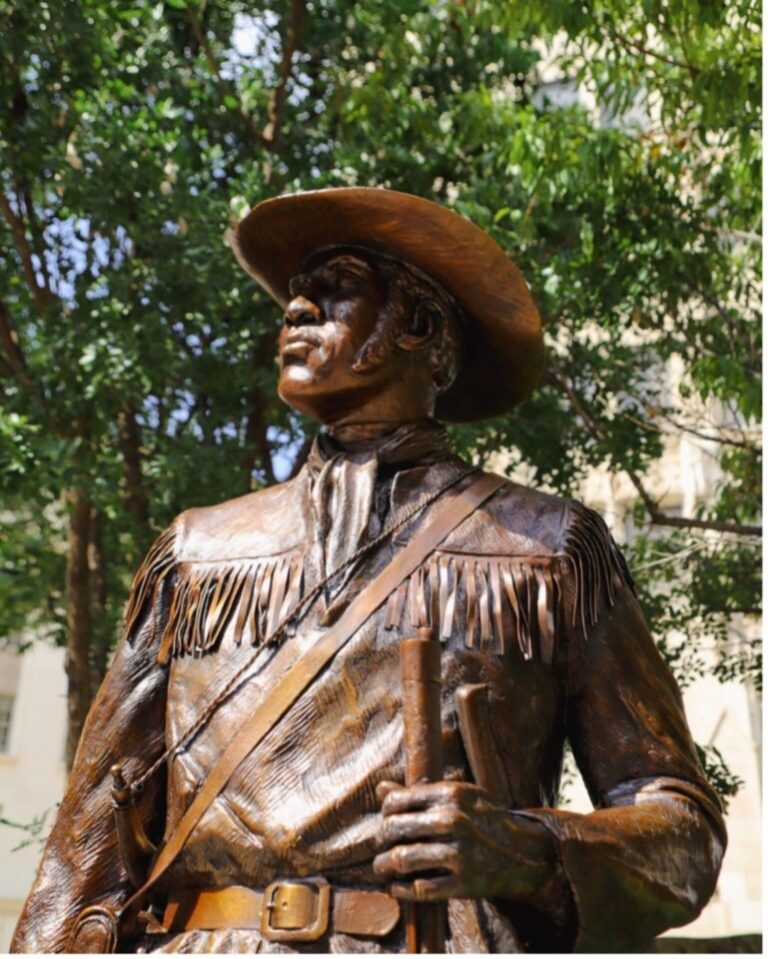Imagina que estás paseando por el río San Antonio en goliada. Por el rabillo del ojo, ves un destello de pelaje elegante que se desliza por la orilla opuesta del río y corta el agua. ¿Qué podría ser? Es muy posible que por poco no hayas visto un Nutria de río norteamericana (Lontra canadensis).
Este nativo del sur de Texas es un mamífero elegante y juguetón que se encuentra en todas las vías fluviales de América del Norte, desde Alaska hasta el Golfo de México. Con su cuerpo aerodinámico, pelaje denso y cola musculosa, la nutria de río está bien adaptada para nadar y utiliza sus patas palmeadas para perseguir peces, cangrejos y ranas. Conocidas por su naturaleza social y curiosa, las nutrias de río a menudo adoptan comportamientos lúdicos, como deslizarse por orillas fangosas. Según los biólogos de mamíferos, las nutrias desempeñan un papel crucial en sus ecosistemas como especie indicadora, una especie cuya presencia, ausencia o abundancia en un entorno sirve como señal de la salud o condición general de ese ecosistema. Las nutrias cumplen esta función controlando las poblaciones de presas y mejorando la biodiversidad.
¿Dónde se encuentran en Texas?
Las nutrias de río, conocidas por su comportamiento juguetón y su agilidad en el agua, son una vista común en los lagos y arroyos del este de Texas. Sin embargo, su rango histórico en Texas fue mucho más extenso. Estos mamíferos semiacuáticos alguna vez habitaron áreas que se extienden desde el Panhandle oriental, a través de la meseta central de Edwards y hasta el Valle del Río Grande en el sur de Texas, incluido el Cuenca del río San Antonio. Según Craig Hensley, biólogo del Departamento de Parques y Vida Silvestre de Texas (TPWD), históricamente se encontraron nutrias de río en el condado de Bexar, a lo largo del área de Goliad. La caza y captura extensivas durante los inicios del comercio de pieles en Estados Unidos, así como la contaminación del agua y la pérdida de hábitat, provocaron una disminución de las poblaciones de nutrias a finales del siglo XIX.th y principios de los 20th siglos, erradicándolos por completo de determinadas zonas. Sin embargo, debido a los esfuerzos de conservación y a la creación de embalses tanto por parte de humanos como de castores en los últimos años, se ha documentado que las nutrias de río expandiéndose hacia el oeste a sus hábitats nativos hasta el área de Abilene. Debido a esta expansión, también se han eliminado de la lista de TPWD. Especies de mayor necesidad de conservación lista.
En un capítulo emocionante en la historia de la conservación de la nutria de río, la Universidad Estatal de Texas anunció esta primavera que Se han registrado cuatro avistamientos de nutria en el río San Marcos. Esta fue la primera vez en 70 años que se documentaron en esa área, lo que llevó a la gente a compartir visiones de los visitantes haciendo tubing junto a estas juguetonas criaturas. Es posible que las nutrias también estén regresando a la cuenca del río San Antonio. El año pasado, una nutria de río fue visto en el río San Antonio en Goliad por el superintendente del Parque Estatal Goliad, Jared Ramírez. Mira la imagen a continuación: ¿puedes ver la nutria?
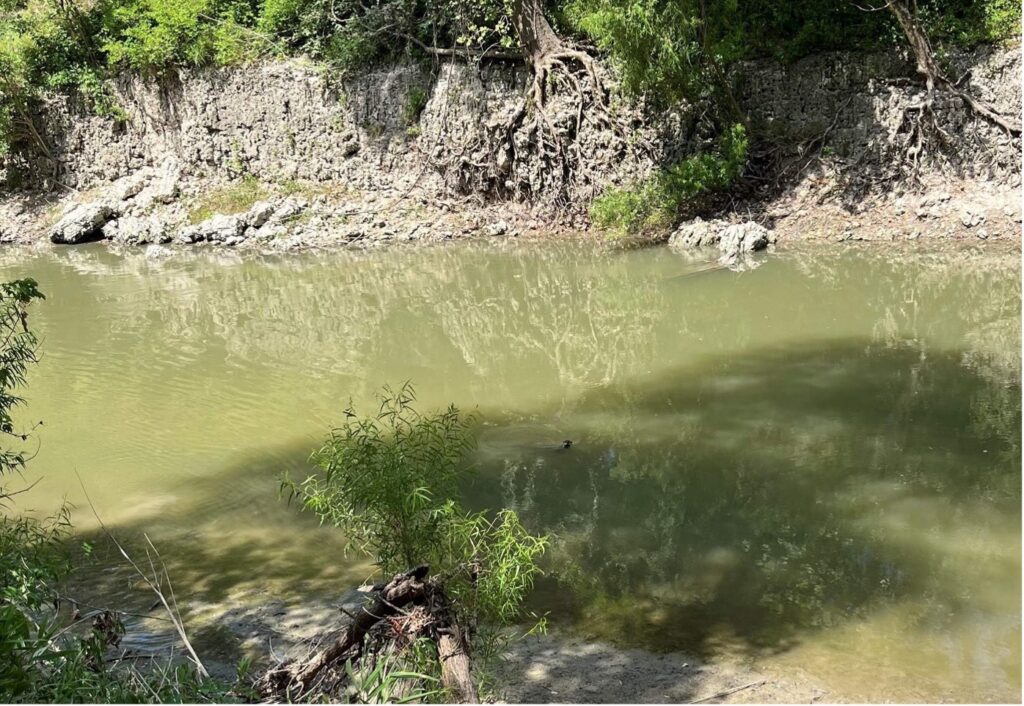
"Animo a la gente a que esté atenta a ellos en el área de San Antonio durante los próximos años e informe sobre los avistamientos a iNaturalist". dijo Craig. Sin embargo, vislumbrar uno es un desafío debido a su naturaleza tímida y esquiva. ¿Dónde han sido los avistamientos más recientes en nuestra zona? Visite el sitio web de iNaturalist para información sobre avistamientos recientes de nutrias de río en Texas.
Nutria: una apariencia invasiva
Mientras estás atento a las nutrias de río, es importante saber más sobre una especie invasora con la que a menudo se las puede confundir:la nutria (coipus miocastor). La nutria, también conocida como coipo, es un roedor invasor originario de América del Sur. Originalmente traídas a los Estados Unidos a partir de 1899 para ser cultivadas y cosechadas para el comercio de pieles, muchos criadores de nutria las liberaron en la década de 1940, cuando el comercio de pieles tocó fondo y otras simplemente escaparon del cautiverio. Gracias a una alta tasa de reproducción cuando se las dejaba a su suerte, la nutria rápidamente se volvió abundante en todos los estados del Golfo y en la costa oeste. En ocasiones, las nutrias se identifican erróneamente como nutrias de río; sin embargo, las dos pertenecen a órdenes taxonómicos diferentes. Como miembro de la Orden Carnivora, las nutrias son similares a los tejones, visones, comadrejas y glotones. Las nutrias son roedores y están estrechamente relacionados con los castores y las ratas almizcleras. Las nutrias se encuentran en todo Texas, incluido el río San Antonio. Según Tommy Mitchell, gerente de operaciones de parques y cuencas hidrográficas de la Autoridad del Río, históricamente se ha encontrado nutria a lo largo de las áreas del río Mission Reach, Eagleland y King William. “Tenemos un programa para atrapar y eliminar nutria similar al programa de cerdos salvajes. La cantidad de nutria observada parece haber disminuido a lo largo de los años, esperamos que debido al programa de eliminación. La principal preocupación con las nutrias es el impacto que tienen en la vegetación acuática y en la orilla del río al excavar, lo que hace que el área falle y erosione el canal”.
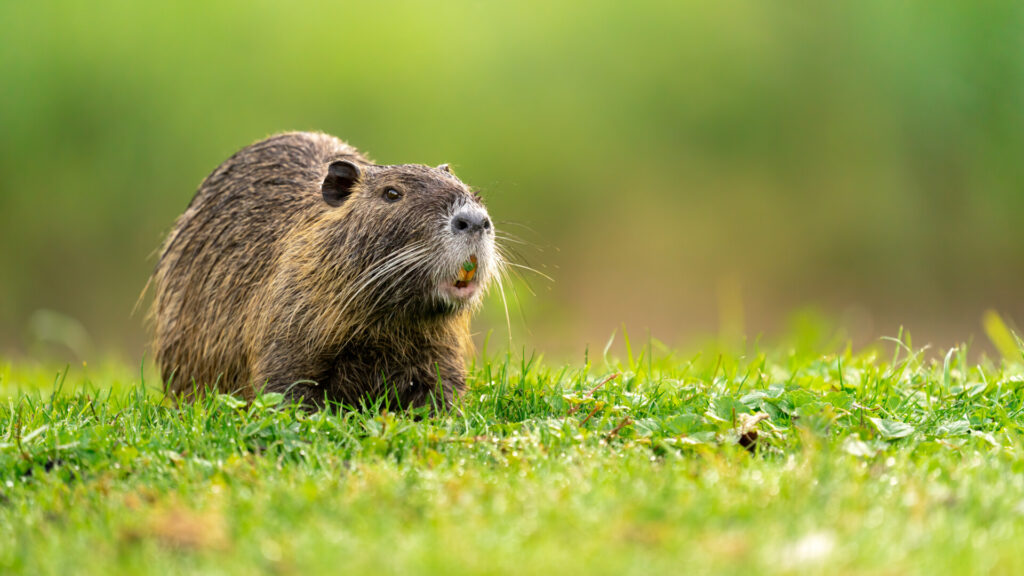
Leyenda: La nutria (en la foto de arriba) a veces puede confundirse con nutrias de río.
Ayudando a la nutria de río
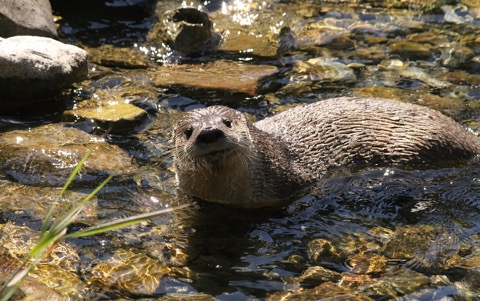
¿Te imaginas ver nutrias de río en la parte alta del río San Antonio en el futuro? Aquí hay algunos pasos a seguir para asegurarnos de mantener nuestras vías fluviales y hábitats acuáticos locales amigables para las nutrias.
- No dejes que la basura ensucie tu río. Las nutrias se alimentan de peces, por lo que es importante garantizar que los peces vivan en vías fluviales libres de productos químicos y metales pesados para evitar que la especie se envenene con mercurio.
- Correa a tu perro. Las nutrias prefieren dormir en arbustos y pastos altos cerca de cursos de agua, así que asegúrese de que los fido estén atados para que no ataquen a una nutria dormida.
- Utilice los puntos de acceso al río existentes. Esto ayuda a preservar el hábitat de las nutrias y prevenir la erosión.
¡Juntos, podemos cuidar de esta fascinante especie nativa del sur de Texas y ayudar a crear una cuenca saludable en la que puedan prosperar!

